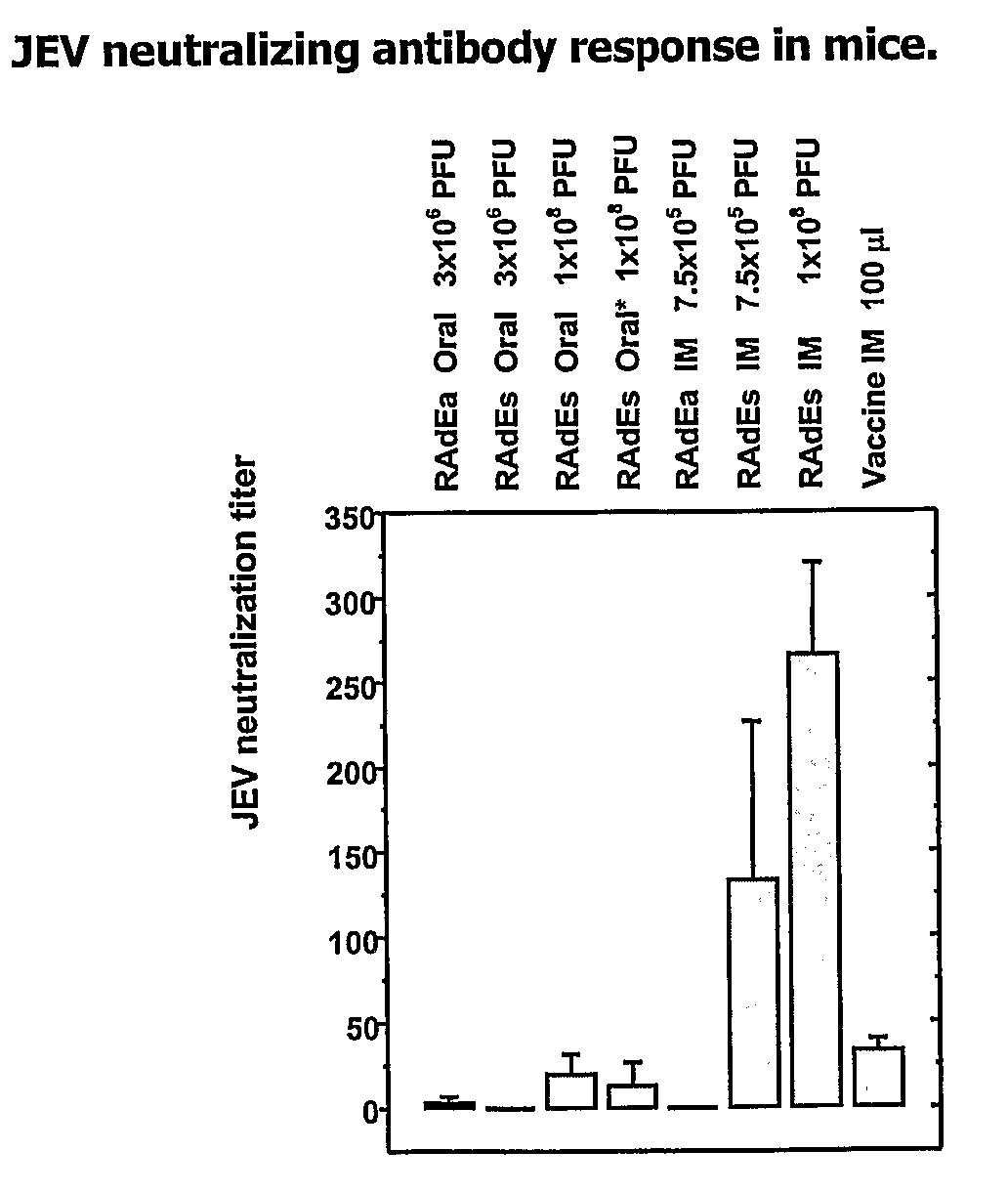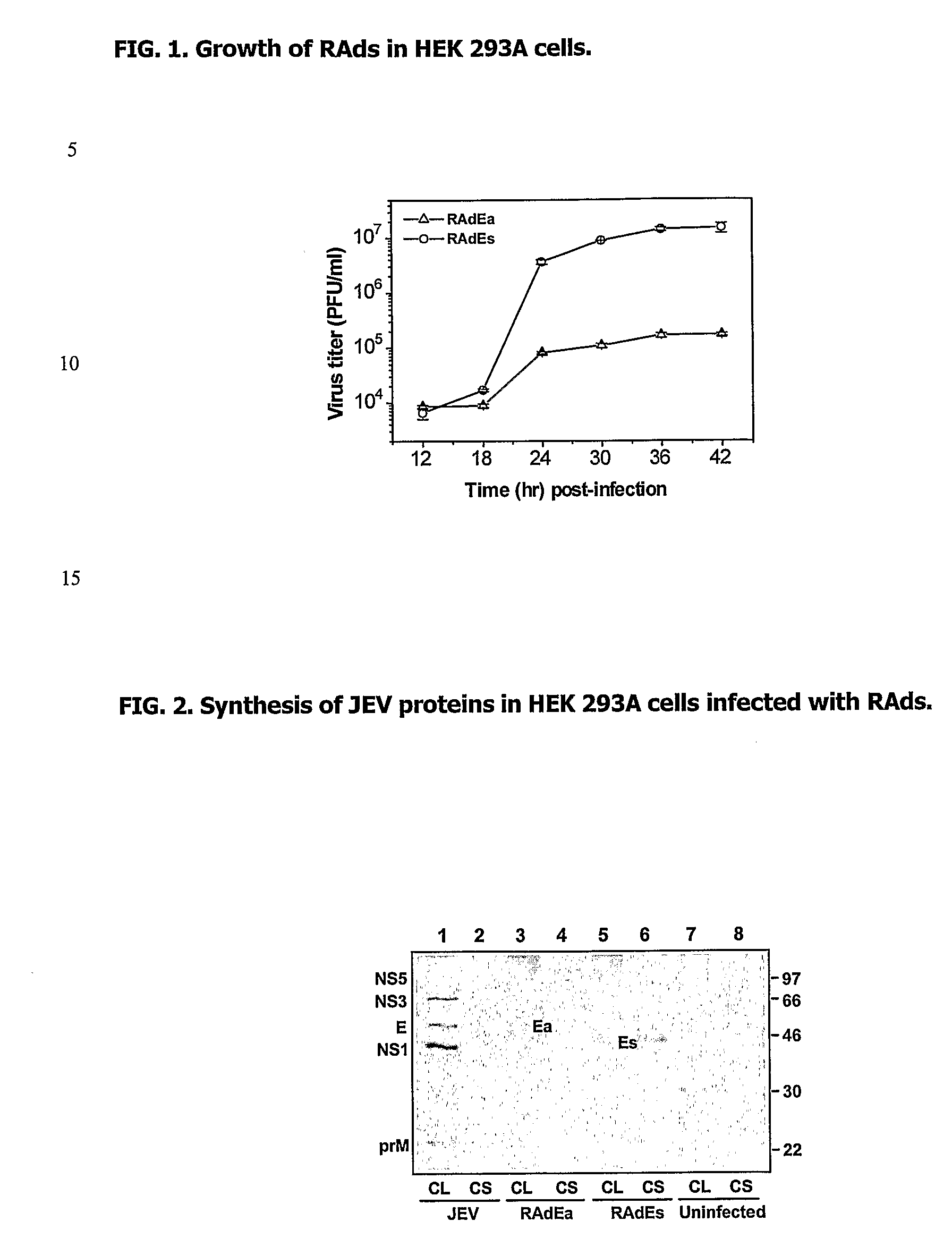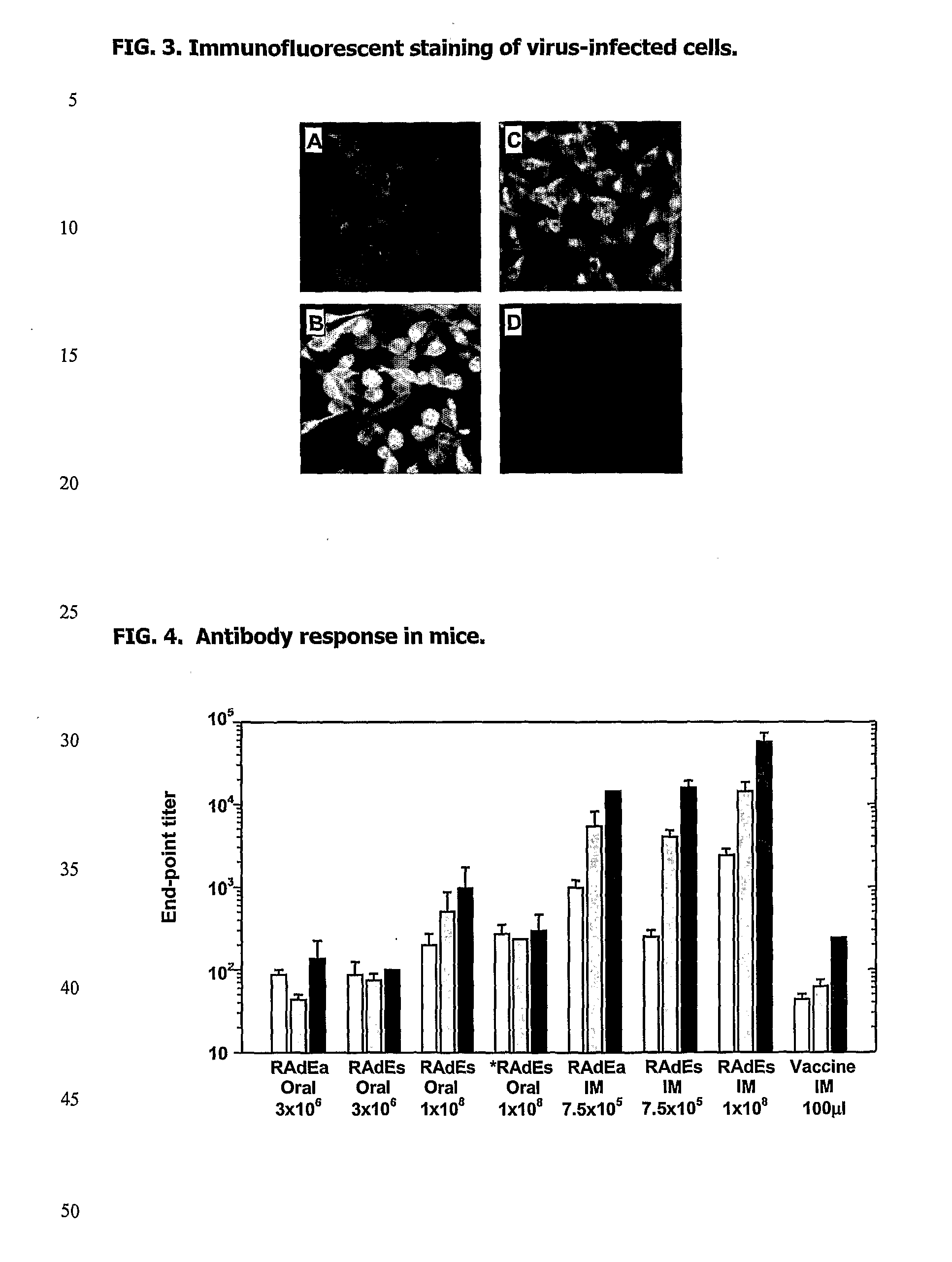Recombinant Vaccine Against Japanese Encephalitis Virus (Jev) Infection and a Method Thereof
- Summary
- Abstract
- Description
- Claims
- Application Information
AI Technical Summary
Benefits of technology
Problems solved by technology
Method used
Image
Examples
example-1
[0054] JEV and cells: The GP78 strain of JEV was used in these studies (44). The virus was grown in neonatal mouse brain. The brain from infected mice was homogenized as a 10% suspension in Eagle's minimal essential medium (EMEM). The suspension was centrifuged and filtered through 0.22 μm sterile filters. The virus was stored at −70° C. in aliquots. Virus titration was carried out by plaque assay on porcine stable kidney (PS) monolayers as described previously (43). Adenovirus was grown in human embryonic kidney (HEK) 293A cells (Quantum Biotechnologies Inc.) cultured in Dulbecco's modified Eagle's medium (DMEM) supplemented with 10% fetal calf serum (FCS).
example-2
[0055] Construction of recombinant adenoviruses: Recombinant adenoviruses were constructed using the Adeno-X expression system (BD Biosciences) that utilized a ligation-based strategy for producing recombinant virus. Using this system a mammalian expression cassette containing the cDNA encoding JEV E protein was incorporated into a replication incompetent (E1 / E3) human adenovirus type 5 (Ad5) genome. Two recombinant adenoviruses (RAds) were made; RAdEa, synthesizing JEV prM and the membrane-anchored E protein, and RAdEs, synthesizing prM and the secretory E protein. Plasmids pMEa and pMEs that contained the cDNAs encoding JEV prM and the membrane-anchored (Ea) or secretory E protein (Es), respectively have been described previously (15). Plasmid pMEa was modified by site-directed mutagenesis to contain an Afl II restriction site down-stream of the 3′-end of the JEV cDNA past the Bam HI site. The JEV cDNA encoding the prM and Ea proteins was excised from the mutated pMEa as a Kpn I-A...
example-3
[0056] Radioimmunoprecipitation: Synthesis of JEV proteins by RAdEa and RAdEs was studied by infection of HEK 293A cells followed by radiolabelling and immunoprecipitation. Briefly, monolayers of HEK 293A cells were infected with virus at a multiplicity of infection (MOI) of 1 and incubated at 37° C. After 24 hr, the cell monolayer was radiolabelled by growing in presence of 100 μCi of Easytag™ EXpre35S35S protein labeling mix (NEN) for 4 hr. The culture supernatant was harvested and stored at −70° C. The monolayers were harvested in 500 μl of radioimmunoprecipitation assay buffer (10 mM Tris-HCl pH 8.0, 140 mM NaCl, 5 mM Iodoacetamide, 0.5% Triton X-100, 1% Sodium dodecyl sulphate (SDS), 1% Sodium deoxycholate, 2 mM Phenylmethylsulfonyl fluoride). Immunoprecipitation was carried out using mouse anti-JEV serum (ATCC) and Protein A Sepharose beads (Amersham). Immunoprecipitated proteins were electrophoresed on a 12% SDS-polyacrylamide gel that was dried before exposing to X-ray film ...
PUM
| Property | Measurement | Unit |
|---|---|---|
| Temperature | aaaaa | aaaaa |
| Time | aaaaa | aaaaa |
| Fraction | aaaaa | aaaaa |
Abstract
Description
Claims
Application Information
 Login to View More
Login to View More - R&D
- Intellectual Property
- Life Sciences
- Materials
- Tech Scout
- Unparalleled Data Quality
- Higher Quality Content
- 60% Fewer Hallucinations
Browse by: Latest US Patents, China's latest patents, Technical Efficacy Thesaurus, Application Domain, Technology Topic, Popular Technical Reports.
© 2025 PatSnap. All rights reserved.Legal|Privacy policy|Modern Slavery Act Transparency Statement|Sitemap|About US| Contact US: help@patsnap.com



